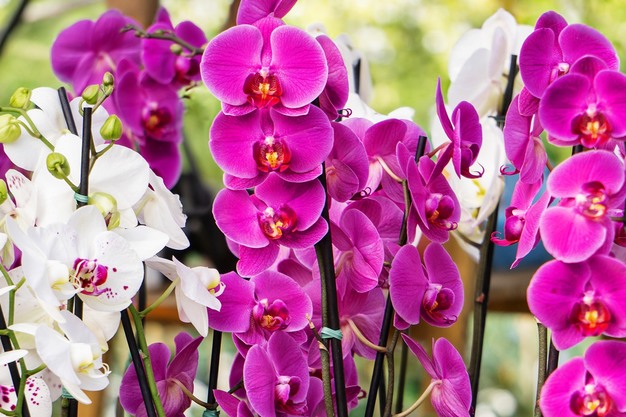Orchids are unique plants that have specific nutritional needs. So, it’s essential to find the appropriate fertilizer to promote optimal plant growth. Below, we discuss the unique fertilizer needs of orchids and some of the best orchid fertilizer options.
Orchids Are Unique and Require Specific Fertilizer
Tropical orchids, being epiphytic, thrive by growing on the surfaces of other plants in their native environments. In the greenhouse, they are particularly sensitive to light, temperature, and fertilization. Orchid production requires a high attention to environmental conditions, with 3 distinct phases – Vegetative, Cooling/Spike Induction and Finishing. Fertilization throughout these phases should adjust with the plant’s growth, making nutrient runoff monitoring very important.

4 Orchid Fertilizer Tips
Since orchids are vulnerable to salt build-up, using a pure fertilizer that is low in Cl is very important.
To prevent salt build-up, water your plants until approximately 20% of the applied water drains from the bottom of the pots. The suggested electrical conductivity (EC) level for the water used on plants is 0.5 mmhos, while the EC level of the drained water (leachate) should ideally fall within the range of 1-1.5 mmhos. If the leachate exceeds 2 mmhos, it’s advisable to flush the plants with clear water.
For fertilization, apply fertilizer with every watering at a rate of 200 ppm N, ensuring sufficient levels of calcium and magnesium. It is recommended to continue fertilization as new spikes emerge.
For more information:
www.PlantProd.com










